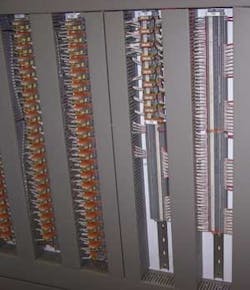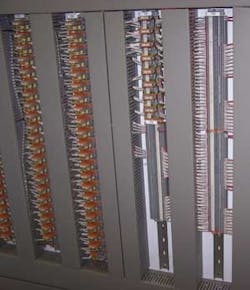Vacuum Lifting Systems Gain Acceptance for Water Projects
Vacuum lifting equipment has been routinely used on oil and gas projects for more than a decade, primarily for lifting steel pipe. However, contractors in other industries are discovering that a growing number of applications are suited to the technology. Vacuum lifting systems can be used with most common pipe materials, including concrete, PVC and ductile iron pipe.
Handling pipe and material on job sites is a labor intensive, time-consuming and potentially dangerous task, but one that is necessary on water and sewer pipeline projects. Pipe supplies must be unloaded from trucks, and each section moved into position for placement in the ground. The conventional method for accomplishing that is to strap or chain pipe to an excavator boom or crane to move joints of pipe.
Vacuum lifting systems use a powerful vacuum force to clamp onto a variety of pipe materials, eliminating the need to strap or chain pipe to a lifting boom. Typically a single operator controls the lifter and can clamp on to and move pipe sections with no additional personnel needed. The lack of chain or strapping reduces labor and employee risk, plus the potential damage to coatings and pipe material.
"Any contractor utilizing vacuum lifting versus traditional methods can expect numerous benefits," said Shawn Lowman, Director of Sales and Marketing for Vacuworx International, a company that specializes in vacuum lifting systems. "While the safety of personnel is the primary benefit, it is hard to ignore the efficiency and cost-savings."
"Contractors can expect to increase productivity by 7 to 12 times during load and unload cycles. The vacuum lifting system requires fewer personnel which translates to a reduction in payroll expenses," he said.
The unique design of the Vaculift system allows users to switch the vacuum pad in as little as five minutes to accommodate a change in material diameter or type. This allows a contractor to use a single vacuum lifter for a wide variety of material applications. Additionally, the universal mounting system can be attached to a variety of host machines without a lot of adapters or brackets.
Vacuworx introduced its MC3 Mini lifter in 2009. With a capacity of 6,600 pounds, it is well suited for steel pipe up to 12 inches OD in 40-foot lengths. It can also be used for polypipe and concrete culverts.
"Because concrete culvert pipes are short and weigh less than longer joints of steel pipe, we haven't found a limit on a size the mini can handle." Lowman said, "MCs also are being used for concrete drop boxes and lids for drainage work. As weights increase, the larger RC10 models (22,000 pounds lifting capacity) may be put in service."
The smaller MC3 Mini can be mounted on an excavator, backhoe, wheel loader, forklift, boom truck, or other types of equipment routinely used on construction job sites. For example, it can be pinned to an excavator; has fork pockets for forklifts and loaders; and is available with a picking eye for a crane or knuckle boom type truck.
The vacuum unit is controlled from the host vehicle with a closed-frequency wireless remote. Host equipment must have the capacity to accommodate the approximately 800 pounds of the lifter, plus the weight of the material. Lifting unit components include the main beam and reservoir; small displacement, one-cylinder gasoline engine vacuum pump, vacuum valve; hydraulic reservoir system; rotator; and vacuum pad.
While vacuum lifting is safe for handling most materials in the field, there are some applications where vacuum lifting is not recommended. For example, when coating is not bonded to the pipe or when dirt or debris is too thick to achieve a good positive seal.
"There is a place for vacuum lifting at most job sites. All of our lifters are suitable for utility projects, but due to the weights of materials being lifted, the Mini is certainly the best fit in the water industry," Lowman said.
Vacuworx manufactures five vacuum lifting units ranging from the MC3 up to the RC20 with a lifting capacity of 44,000 pounds. The company can customize lifters to accommodate a variety of applications and lifting needs.
WW
What Happens If Power Is Lost?
Vacuum lifting systems are designed with a stored vacuum supply that will hold loads if the power is suddenly lost. Current safety standards require systems to hold material securely under no power for 10 minutes. Vacuworx systems are designed with a 3-to-1 safety ratio, and store enough vacuum in the reservoir to suspend the material between 20-30 minutes, depending on the type of material.
More WaterWorld Current Issue Articles
More WaterWorld Archives Issue Articles


